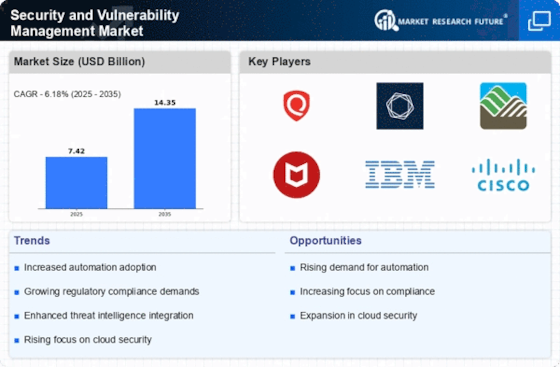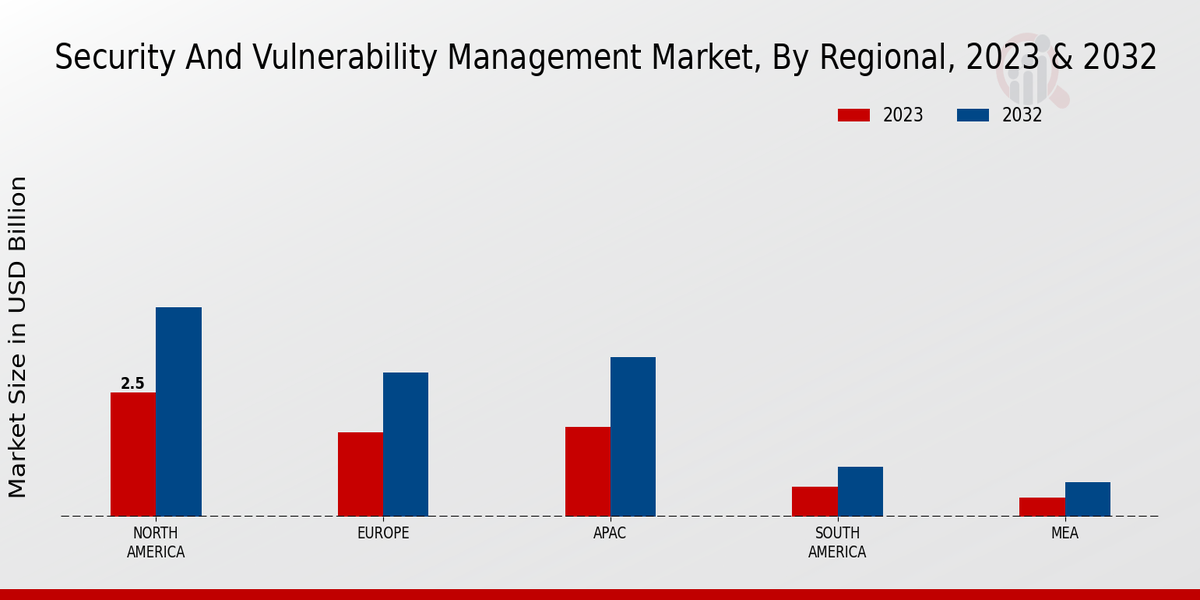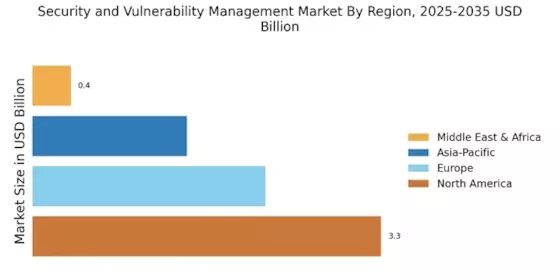Rising Cybersecurity Threats
The increasing frequency and sophistication of cyber threats is a primary driver for the Security and Vulnerability Management Market. Organizations are facing a myriad of attacks, including ransomware, phishing, and advanced persistent threats. According to recent data, the number of reported cyber incidents has surged, prompting businesses to invest heavily in security solutions. This trend indicates a growing recognition of the need for robust security measures to protect sensitive data and maintain operational integrity. As a result, the demand for comprehensive vulnerability management solutions is likely to escalate, as organizations seek to identify and mitigate potential risks before they can be exploited. The Security and Vulnerability Management Market is thus positioned for significant growth as companies prioritize cybersecurity in their strategic planning.
Adoption of Cloud Technologies
The rapid adoption of cloud technologies is significantly influencing the Security and Vulnerability Management Market. As organizations migrate their operations to the cloud, they face new security challenges that necessitate advanced vulnerability management solutions. The cloud environment introduces unique vulnerabilities that require specialized tools for detection and remediation. Market data indicates that the cloud security segment is expected to grow substantially, driven by the need for organizations to secure their cloud infrastructures. This shift towards cloud-based solutions is likely to propel the demand for integrated security and vulnerability management tools that can effectively address the complexities of cloud security. Consequently, the Security and Vulnerability Management Market is poised for growth as businesses seek to enhance their security posture in the cloud.
Regulatory Compliance Requirements
The evolving landscape of regulatory compliance is another critical driver for the Security and Vulnerability Management Market. Organizations are increasingly required to adhere to stringent regulations such as GDPR, HIPAA, and PCI DSS, which mandate the implementation of effective security measures. Non-compliance can result in severe penalties and reputational damage, compelling businesses to invest in vulnerability management solutions. The market is witnessing a surge in demand for tools that facilitate compliance monitoring and reporting, as organizations strive to align their security practices with regulatory standards. This trend suggests that the Security and Vulnerability Management Market will continue to expand as companies seek to navigate the complexities of compliance while ensuring the protection of their assets.
Integration of Advanced Technologies
The integration of advanced technologies such as artificial intelligence and machine learning is transforming the Security and Vulnerability Management Market. These technologies enable organizations to automate vulnerability assessments and enhance threat detection capabilities. By leveraging AI and machine learning, businesses can analyze vast amounts of data to identify patterns and anomalies that may indicate potential security threats. This technological advancement is likely to improve the efficiency and effectiveness of vulnerability management processes, making it easier for organizations to respond to emerging threats. As the demand for innovative security solutions increases, the Security and Vulnerability Management Market is expected to evolve, driven by the need for organizations to stay ahead of sophisticated cyber threats.
Increased Awareness of Cybersecurity Risks
There is a growing awareness among organizations regarding the potential risks associated with inadequate cybersecurity measures. This heightened awareness is driving the demand for effective security and vulnerability management solutions. Companies are recognizing that a proactive approach to identifying and mitigating vulnerabilities is essential to safeguard their operations and reputation. The Security and Vulnerability Management Market is benefiting from this trend, as organizations invest in tools that provide real-time visibility into their security posture. This shift towards proactive security measures indicates a broader understanding of the importance of vulnerability management in the overall cybersecurity strategy. As awareness continues to rise, the market is likely to experience sustained growth.



















Leave a Comment